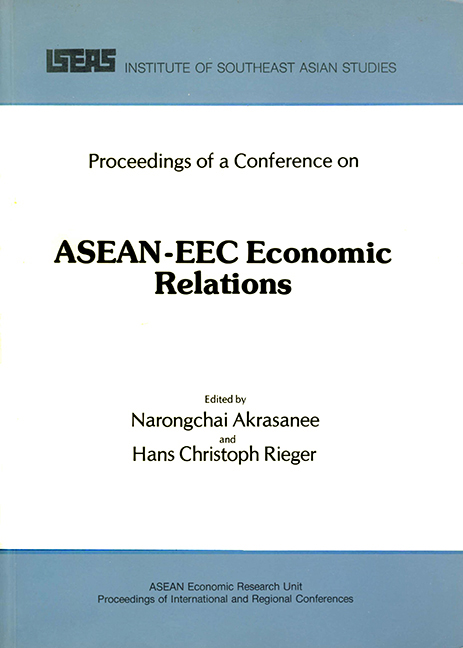ASEAN-EC Joint Ventures: A Case Study of Promoted Firms in Thailand
from II - INVESTMENT
Published online by Cambridge University Press: 21 October 2015
Summary
INTRODUCTION
Foreign investment is an important vehicle to development, and Thailand, like most developing countries, has been keen to attract more of it. The virtues supposedly associated with foreign investment are many: foreign investment can help generate new jobs which is important in developing countries where unemployment is often a seemingly intractable problem; foreign investment can serve as a useful medium to help raise the technological levels and the management skills of the host country; foreign investment can make a positive contribution to the balance of payments of the host country because export-oriented investments can help earn much needed foreign exchange while investments for import substitution purposes can help save what little foreign exchange reserves there are in most developing countries. Deficits in the balance of trade have become particularly acute in the case of Thailand. In 1970, the deficit in the balance of trade was close to 10 billion baht and increased more than three times to nearly 38 billion baht in 1979. It is not the purpose of this paper to present all the arguments in favour of or against foreign investments. The point to be made is that most developing countries are convinced that foreign investment is good and every effort is made to attract as much investment as possible. Thailand is no exception. The setting up of the Board of Investment in 1959 and the promulgation of the Investment Promotion Act of 1977 – the latest in a series of laws designed to attract foreign investment to Thailand – all manifest the importance attached to foreign investment by the Thai Government.
EEC INVESTMENT IN ASEAN AND THAILAND
Using share in total registered capital of all promoted firms as an indicator, Japan has led all other countries in investing in Thailand in the two decades from 1960-80. During this period, about 77 per cent of total registered capital were from local sources while close to 8 per cent were held by Japanese investors.
- Type
- Chapter
- Information
- ASEAN-EEC Economic Relations , pp. 346 - 368Publisher: ISEAS–Yusof Ishak InstitutePrint publication year: 1981



